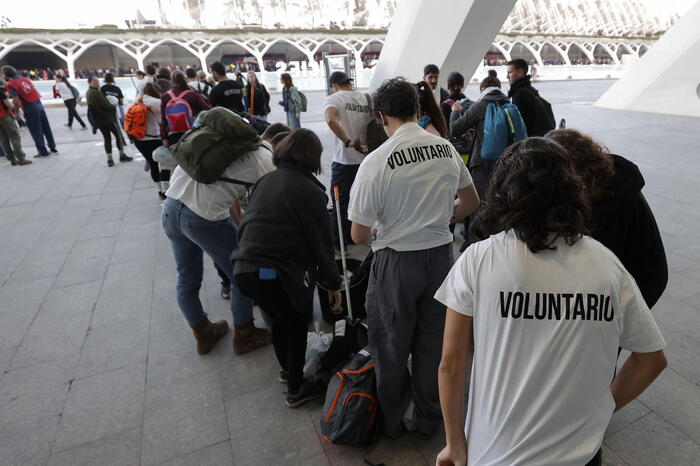More than two hundred dead and a region on its knees: the toll of flash floods in Spain’s Valencia region is a punch in the gut, a warning about the risks of climate change and its resulting violent and unpredictable weather phenomena. According to the Integrated Operational Coordination Center (CECOPI), the floods were caused by a DANA (high-altitude isolated depression) hitting the east of the country. Spain’s national weather agency (AEMET) declared that on October 29, 2024 Valencia received a year’s worth of rain.
Since this morning, thousands of volunteers have flocked to Valencia’s City of Arts and Sciences, where a coordination center shuttles them by bus to the hardest-hit towns. Their goal is to clean up; clearing mud, moving debris from bridges, buildings and roads damaged by the onslaught of rain and wind that hit Tuesday. They join the thousands of soldiers, police, firefighters and civil guards who are still trying to locate and if possible, rescue the missing.
According to authorities, there will be more than six thousand volunteers working this Saturday on the streets of the affected municipalities, transported by a hundred buses.

Spanish television, RTVE, is broadcasting live continuously from the flood sites following the work of the rescuers, with striking images of cars still trapped in tunnels and streets cluttered with piled-up vehicles, of underground garages from which are still emerging the bodies of people caught in the water and unable to escape. The number of missing people is not yet calculable, and thousands remain without drinking water, landlines and electricity; not to mention damage to houses that were flooded to the roof, and fleeing residents who have sought shelter with friends or relatives.
The severe weather that already hit several parts of Italy last month is not subsiding: the entire Mediterranean is at risk of violent phenomena. There is an orange alert in southern Spain and on the Balearic Islands; there are also three more confirmed fatalities between Andalusia and Catalonia.
These are scenes reminiscent of the historic flooding of Florence in 1966, when citizens from all over Italy rushed to clean up the streets invaded by mud from the Arno River after ten days of incessant rain. But that exceptional event today has become the norm, and what is most frightening is the unpredictability: not ten days of rain, but just a few hours of an extremely violent downpour that surpassed all forecasts.
The phenomenon of the gota fría, the “cold drop,” is customary in the fall when cold air arrives over the warmth of the Mediterranean, causing the creation of thick clouds. But according to the Spanish Meteorological Services, this week’s rain was at least ten times more violent than normal.
In Spain, there are more than 26 thousand kilometers of rivers along flood-prone areas, and 2.7 million people live in those that face the greatest danger from frequent events, reports El Pais newspaper. There, as elsewhere in the European Union–and particularly in Italy, where the situation is equally risky in lowland areas–a joint effort is needed to make the areas safer.












